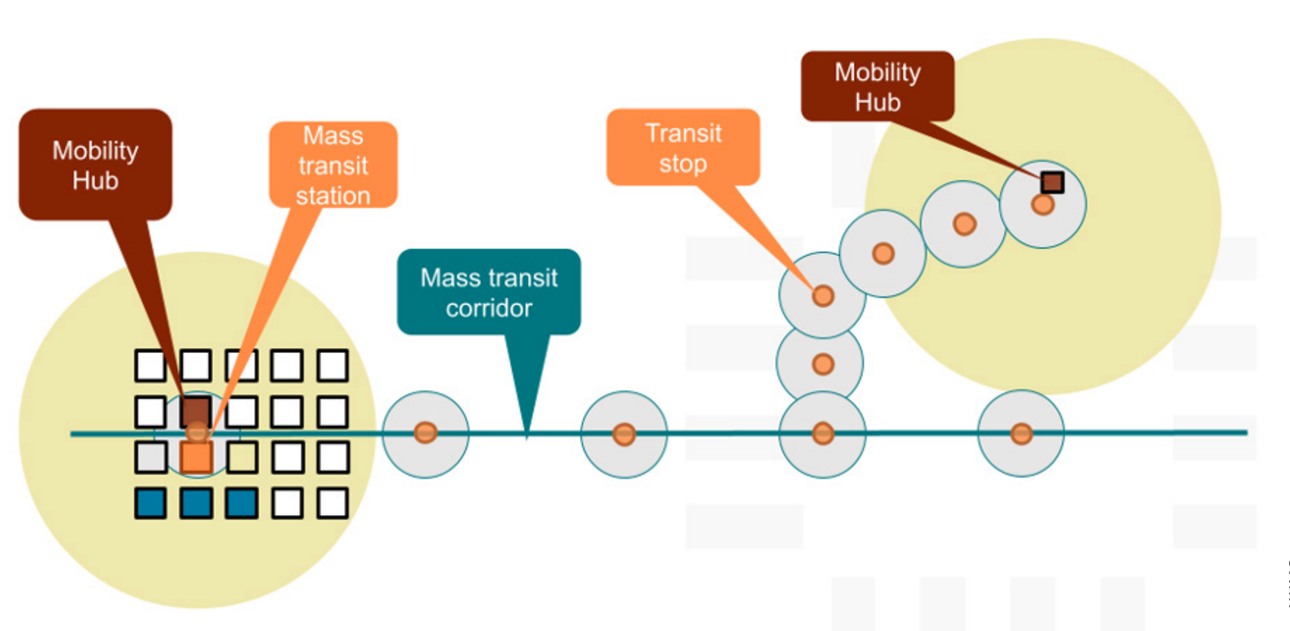Mobility Hubs in San Antonio: A Path to Equity and Sustainability
This report presents the process and results of multistakeholder work—led by ULI, VIA, and the city of San Antonio and supported by NUMO with participation from several stakeholders from the public, private, and civic sectors—that aimed to develop a process to identify mobility hubs in the city and assess representative locations that could generate an increase in access to opportunities, goods, and services for residents in the city, with a special emphasis on increasing equity and reducing vulnerabilities. It is a first but significant step in achieving a network of mobility hubs that will help residents go where they need and want to go with affordable mobility.
The process to identify mobility hub potential in San Antonio involved five steps:
1. Brainstorming ideas with key City of San Antonio partners and VIA Metropolitan Transit to arrive at a collective definition of mobility hubs, appropriate to the city;
2. Discussion around values drawn from recent citywide plans, transit agency plans, policies, and community engagements and determination of how they could be reflected in criteria and metrics for mobility hub site selection;
3. Technical work on refining how the definition and values would be translated into a set of criteria, which were later analyzed in a geographic information system (GIS) analysis;
4. Additional analysis complemented by site visits to potential mobility hub locations and interviews with relevant stakeholders;
5. Discussion of initial results and next steps. The future looks promising, and steps can be taken to achieve the implementation of mobility hubs both in the short term and long term.
Panelist Chair:
John Bailey
Panelists:
- Harriet Tregoning
- Carlos Pardos
- Shafaq Choudry
- Javier Paredes
- Daniel Leal
- David Adelman
- Taylor Dawson
- Kammy Horne
- Manjiri Akalkotkar
- Jacob Floyd
This report presents the process and results of multistakeholder work—led by ULI, VIA, and the city of San Antonio and supported by NUMO with participation from several stakeholders from the public, private, and civic sectors—that aimed to develop a process to identify mobility hubs in the city and assess representative locations that could generate an increase in access to opportunities, goods, and services for residents in the city, with a special emphasis on increasing equity and reducing vulnerabilities. It is a first but significant step in achieving a network of mobility hubs that will help residents go where they need and want to go with affordable mobility.
The process to identify mobility hub potential in San Antonio involved five steps:
1. Brainstorming ideas with key City of San Antonio partners and VIA Metropolitan Transit to arrive at a collective definition of mobility hubs, appropriate to the city;
2. Discussion around values drawn from recent citywide plans, transit agency plans, policies, and community engagements and determination of how they could be reflected in criteria and metrics for mobility hub site selection;
3. Technical work on refining how the definition and values would be translated into a set of criteria, which were later analyzed in a geographic information system (GIS) analysis;
4. Additional analysis complemented by site visits to potential mobility hub locations and interviews with relevant stakeholders;
5. Discussion of initial results and next steps. The future looks promising, and steps can be taken to achieve the implementation of mobility hubs both in the short term and long term.
Panelist Chair:
John Bailey
Panelists:
- Harriet Tregoning
- Carlos Pardos
- Shafaq Choudry
- Javier Paredes
- Daniel Leal
- David Adelman
- Taylor Dawson
- Kammy Horne
- Manjiri Akalkotkar
- Jacob Floyd


